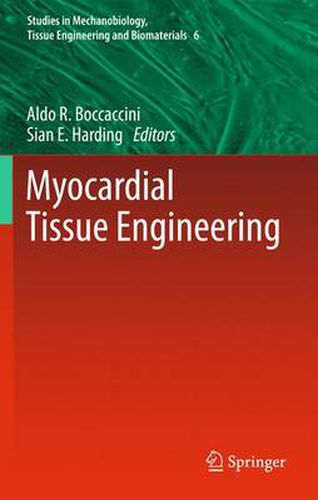Readings Newsletter
Become a Readings Member to make your shopping experience even easier.
Sign in or sign up for free!
You’re not far away from qualifying for FREE standard shipping within Australia
You’ve qualified for FREE standard shipping within Australia
The cart is loading…






This title is printed to order. This book may have been self-published. If so, we cannot guarantee the quality of the content. In the main most books will have gone through the editing process however some may not. We therefore suggest that you be aware of this before ordering this book. If in doubt check either the author or publisher’s details as we are unable to accept any returns unless they are faulty. Please contact us if you have any questions.
Myocardial tissue engineering (MTE), a concept that intends to prolong patients’ life after cardiac damage by supporting or restoring heart function, is continuously improving. Common MTE strategies include an engineered ‘vehicle’, which may be a porous scaffold or a dense substrate or patch, made of either natural or synthetic polymeric materials. The function of the substrate is to aid transportation of cells into the diseased region of the heart and support their integration. This book, which contains chapters written by leading experts in MTE, gives a complete analysis of the area and presents the latest advances in the field. The chapters cover all relevant aspects of MTE strategies, including cell sources, specific TE techniques and biomaterials used. Many different cell types have been suggested for cell therapy in the framework of MTE, including autologous bone marrow-derived or cardiac progenitors, as well as embryonic or induced pluripotent stem cells, each having their particular advantages and disadvantages. The book covers a complete range of biomaterials, examining different aspects of their application in MTE, such as biocompatibility with cardiac cells, mechanical capability and compatibility with the mechanical properties of the native myocardium as well as degradation behaviour in vivo and in vitro. Although a great deal of research is being carried out in the field, this book also addresses many questions that still remain unanswered and highlights those areas in which further research efforts are required. The book will also give an insight into clinical trials and possible novel cell sources for cell therapy in MTE.
$9.00 standard shipping within Australia
FREE standard shipping within Australia for orders over $100.00
Express & International shipping calculated at checkout
This title is printed to order. This book may have been self-published. If so, we cannot guarantee the quality of the content. In the main most books will have gone through the editing process however some may not. We therefore suggest that you be aware of this before ordering this book. If in doubt check either the author or publisher’s details as we are unable to accept any returns unless they are faulty. Please contact us if you have any questions.
Myocardial tissue engineering (MTE), a concept that intends to prolong patients’ life after cardiac damage by supporting or restoring heart function, is continuously improving. Common MTE strategies include an engineered ‘vehicle’, which may be a porous scaffold or a dense substrate or patch, made of either natural or synthetic polymeric materials. The function of the substrate is to aid transportation of cells into the diseased region of the heart and support their integration. This book, which contains chapters written by leading experts in MTE, gives a complete analysis of the area and presents the latest advances in the field. The chapters cover all relevant aspects of MTE strategies, including cell sources, specific TE techniques and biomaterials used. Many different cell types have been suggested for cell therapy in the framework of MTE, including autologous bone marrow-derived or cardiac progenitors, as well as embryonic or induced pluripotent stem cells, each having their particular advantages and disadvantages. The book covers a complete range of biomaterials, examining different aspects of their application in MTE, such as biocompatibility with cardiac cells, mechanical capability and compatibility with the mechanical properties of the native myocardium as well as degradation behaviour in vivo and in vitro. Although a great deal of research is being carried out in the field, this book also addresses many questions that still remain unanswered and highlights those areas in which further research efforts are required. The book will also give an insight into clinical trials and possible novel cell sources for cell therapy in MTE.